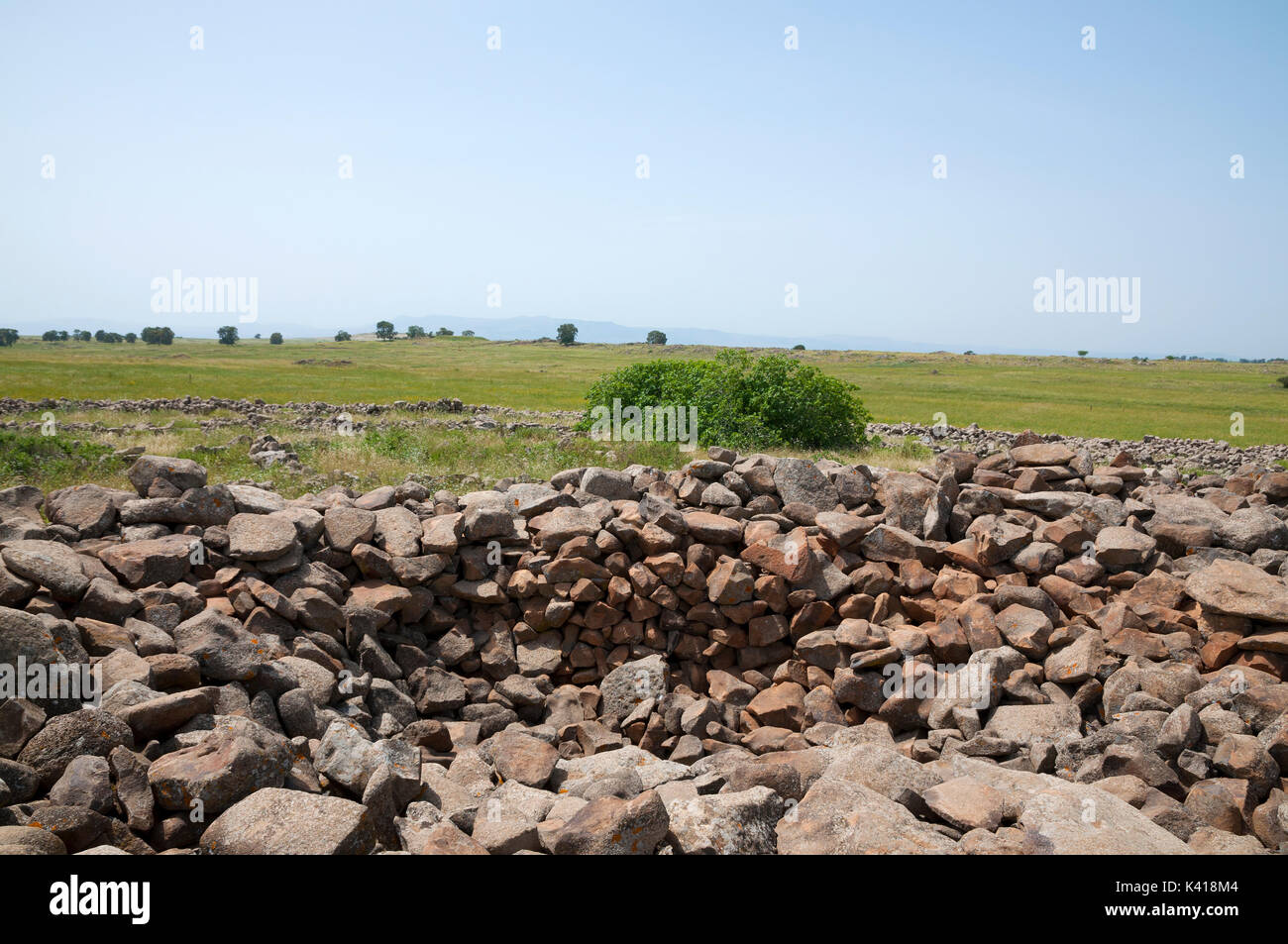
The central tumulus is built from smaller rocks, and is thought to have been constructed after the surrounding walls were constructed. The walls of the circles are connected by irregularly placed smaller stone walls perpendicular to the circles. The remains consist of a large circle (slightly oval) of basalt rocks, containing four smaller concentric circles, each getting progressively thinner some are complete, others incomplete. The site is often referred to as the " Stonehenge of the Levant."

It was estimated by Freikman that the transportation and building of the massive monument would have required more than 25,000 working days. It is made from 37,500-40,000 tons of partly worked stone stacked up to 2 meters (6.6 ft) high. The site was made from Basalt rocks, common in the Golan Heights due to the region's history of volcanic activity. The site's size and location, on a wide plateau which is also scattered with hundreds of dolmens, means that an aerial perspective is necessary to see the complete layout. A modern Hebrew name used for the site is Gilgal Ref?'?m or Galgal Ref?'?m, "Wheel of Spirits" or "Wheel of Ghosts" as Refa'im means "ghosts" or "spirits". Rogem Hiri is a Hebrew version of the Arabic name Rujm el-Hiri. The name is sometimes romanized as Rujm Hiri or Rujum al-Hiri. rujum Hebrew: rogem) can also refer to a tumulus, a heap of stones underneath which human burial space was located. The name Rujm el-Hiri, "stone heap of the wild cat", was originally taken from Syrian maps. However, there is no consensus regarding its function, as no similar structure has been found in the Near East. Since excavations have yielded very few material remains, Israeli archeologists theorize that the site was not a defensive position or a residential quarter but most likely a ritual center featuring ritual activity to placate the gods, or possibly linked to the cult of the dead. The establishment of the site, and other nearby ancient settlements, is dated by archaeologists to the Early Bronze Age II period (3000-2700 BCE). The outermost wall is 520 feet (160 m) in diameter and 8 feet (2.4 m) high. Some circles are complete, others incomplete. Made up of more than 42,000 basalt rocks arranged in concentric circles, it has a mound 15 feet (4.6 m) tall at its center. It is located in the Israeli-occupied portion of the Golan Heights, some 16 kilometres (9.9 mi) east of the coast of the Sea of Galilee, in the middle of a large plateau covered with hundreds of dolmens. Rujm el-Hiri ( Arabic:, Rujm al-H?r? Hebrew: Gilgal Ref?'?m or Rogem Hiri) is an ancient megalithic monument consisting of concentric circles of stone with a tumulus at center. The establishment of the site, and other nearby ancient settlements, is dated by archaeologists to the Early Bronze Age II period (3000–2700 BCE).Since excavations have yielded very few material remains, Israeli archeologists theorize that the site was not a defensive position or a residential quarter but most likely a ritual center, possibly linked to the cult of the dead. The outermost wall is 520 feet (160 m) in diameter and 8 feet (2.4 m) high.

It is located in the Israeli-occupied portion of the Golan Heights, some 16 kilometres (9.9 mi) east of the coast of the Sea of Galilee, in the middle of a large plateau covered with hundreds of dolmens.Made up of more than 42,000 basalt rocks arranged in concentric circles, it has a mound 15 feet (4.6 m) tall at its center. Rujm el-Hiri (Arabic: رجم الهري, Rujm al-Hīrī Hebrew: גִּלְגַּל רְפָאִים Gilgal Refā'īm or Rogem Hiri) is an ancient megalithic monument consisting of concentric circles of stone with a tumulus at center.


 0 kommentar(er)
0 kommentar(er)
